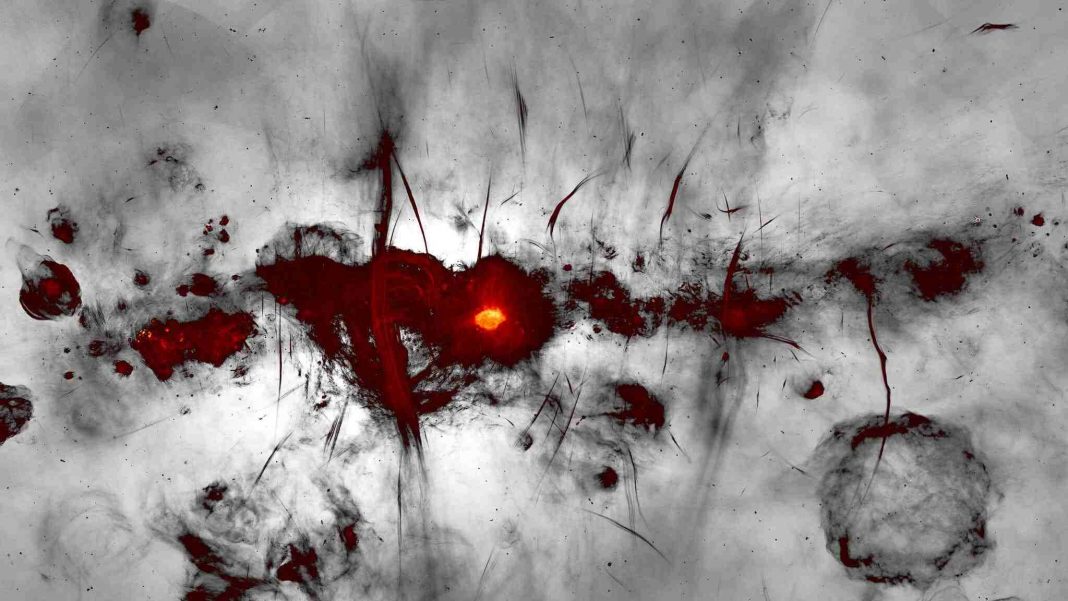The Milky Way, our home galaxy, seems to be ruled by noise and disorder, according to an extraordinary photograph taken lately by astronomers in South Africa. This is how the Milky Way looks in the image.
It was captured by the MeerKAT radio telescope, a network of 64 antennas scattered over five miles of desert in northern South Africa, and it depicts an intense flurry of activity in the Milky Way’s core area, with threads of radio emission braided and kinked across space within bubbles of energy. Sagittarius A*, a supermassive black hole that has been extensively investigated, creates its own enthusiastic hum in the very core of the galaxy.
From a distance, we are used to perceiving galaxies as delicate, shimmering eggs of light or as magnificent, bejewelled whirlpools dripping with jewels. Rarely do we get a peek of the seething under the clouds, with all of the many kinds of fury that a hundred million or more stars might get themselves into at any one time.
It was acquired and examined by a team of astronomers headed by Ian Heywood of Oxford University and the South African Radio Astronomy Observatory, who worked together to capture and decipher the picture. They published their findings in the Astrophysical Journal only a few days ago.
Merekat is an early stage in the development of the Square Kilometre Array, an enormous array of antennas that will be built in South Africa and Australia in the next decade. The facility will be the most powerful radio telescope on the planet for the foreseeable future when it is fully operational.
Large portions of the Milky Way’s sky are made black by interfering clouds of cosmic dust, which are visible to visible-light telescopes. Radio waves, on the other hand, travel straight through, allowing MeerKAT to get up close and personal.
Fernando Camilo, head scientist of the South African Radio Astronomy Observatory and one of several co-authors of the new article, stated in a press release that “the greatest telescopes broaden our horizons in unanticipated ways.”
To create the picture, twenty different observations were made, resulting in a total of 70 terabytes of data and three years of processing time. In the end, it produced a picture of the centre areas of the Milky Way that was 1,000 light-years wide and 600 light-years high.
As a ragged horizontal stripe in the picture, the Milky Way’s disc, which contains the majority of the galaxy’s stars and exoplanets, is visible. A thick clump of energy in the midst of the streak denotes the location of a black hole four million times the mass of our sun, which is lurking nearby. The surrounding area is densely packed with unexplained luminous filaments that stretch for hundreds of light-years in length.
Astronomers have hypothesised that such filaments, which were first seen 35 years ago, are produced by magnetised tubes of gas and high-energy particles, which are then ejected into space. However, experts are still baffled as to how they came to be. According to the research’s authors, the new publication has gathered enough fresh instances of such characteristics to allow them to examine their qualities and variants as a group for the first time.
A matching pair of massive radio bubbles can be seen emanating vertically above and below the galactic disc. These radio bubbles are thought to represent the remnants of a sequence of supernova explosions that happened several million years ago. Luminous spots of supermassive black holes in distant galaxies are seen in the background of the radio picture captured in the foregroun

